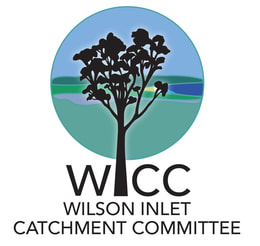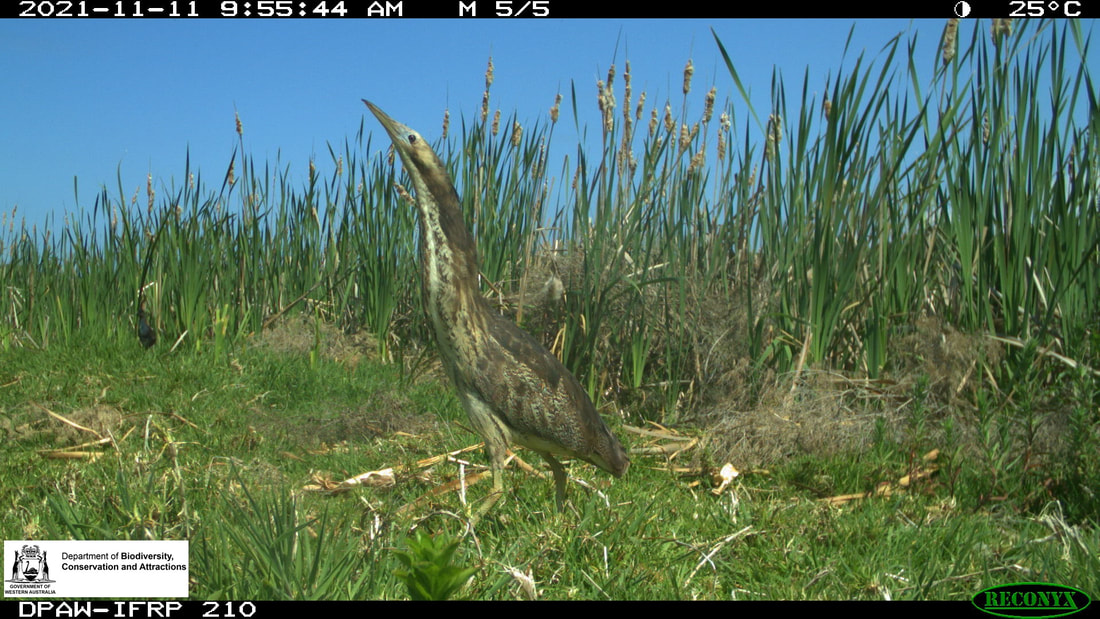Saving Boordenitj is a collaborative project utilising the expertise and capacity of state agencies, NGOs, community groups, private sector, first nations groups and private landholders to deliver critical conservation activities pertinent to the conservation of Western Australia’s Australasian Bittern population. The project aims to increase the trajectory of the Endangered Boordenitj by filling key knowledge gaps, increasing site stewardship, improving habitat value and extent, and reducing threats to the wetlands of the southwest coast of Western Australia.
The project seeks to address two of the three practical actions targeted by the grant, namely (i) Protection and/or restoration of wetland habitat particularly in Western Australia, and (ii) Prevent predation by feral animals through control programs for feral cats and foxes. To strategically guide these activities and improve the efficacy of ongoing interventions, the project will also implement high priority, foundational actions identified in the Australasian Bittern (Botaurus poiciloptilus) Western Australian Recovery Plan.
Background: The unique freshwater wetlands of the southwest coast are recognised as a stronghold for Western Australia’s Australasian Bittern population. Bitterns have been located in 31 wetlands in the southwest since 2007 but significant gaps in our knowledge of species ecology (habitat selection, movement, breeding sites), the underlying functionality of wetlands, and attendant ecological processes that link the two, preclude strategic broad-scale conservation planning. Manageable threats, including inappropriate grazing, fire and feral predators, persist for Australasian Bittern across the southwest and act as multipliers to ongoing encroachment from dry land salinity and acidification
impacting freshwater, vegetated wetlands throughout the region. Significant Bittern sites such as Kulunilup in the RAMSAR listed Muir-Unicup wetlands have already succumbed to irreparable damage. This project seeks to better understand how Bitterns use the landscape and salvage the remaining freshwater wetlands by focusing on maintaining or restoring their value for Australasian Bittern and reducing the pervasive threat of predation.
The key project activities below are designed to not only provide immediate conservation impact but fill foundational knowledge gaps and widen the skill base amongst local practitioners and community to participate in long-
term recovery actions.
1 Monitoring (species, water quality, threats)
- Conduct waterbird surveys targeting detection of bittern and potential breeding across >20 wetlands.
- Undertake parallel wetland condition and water quality monitoring (including pre and post works monitoring at wetland restoration sites).
- Deploy remote audio recorders across wetlands in public and private land in Bittern breeding season.
- Deploy remote cameras across wetlands in public and private land to monitor Bittern and feral predators.
- Deploy remote cameras at wetland restoration sites to evaluate efficacy of interventions for creating Bittern habitat.
2. Tracking
- Refine catch techniques for Bitterns across 3 wetlands.
- Catch and acquire age, sex, morphological measurements and DNA samples from >3 male Bittern.
- Deploy 3 GPS trackers on male bitterns.
3. Feral predator control and monitoring
- Deploy quarterly fox baiting program across 200ha at 1 bait per ha for 2 years in the Eungedup wetland complex.
- Deploy predator control across participating private properties in the Manypeaks and Two Peoples Bay region in coordination with DBCA’s public lands program.
4. Landholder engagement and incentives
- Undertake a program of landholder engagement in areas of likely current or historic bittern habitat.
- Develop Voluntary Management Agreements (VMA) for >5 new wetland sites.
- Conduct three feral predator control workshops focused on training and permit application for private landholders and indigenous ranger groups conducted by Alpha Pest Animal Solutions and Albany and Surrounds Feral Cat Working Group (ASFCWG) in Two Peoples Bay, Manypeaks and Denmark.
- Subsidize payment of licencing for the application of 1080 on private properties and provide up to 20 baits per participant for 30 landholders.
- Conduct two wetland stewardship workshops focused on training landholders and indigenous rangers in best practice management of private wetlands for waterbirds.
5. Private wetland restoration
- Fence 90ha of wetlands on predetermined private properties in the Manypeaks region.
- Revegetate >5ha of wetland with emergent water plants on predetermined private properties in the Manypeaks region.
- Undertake LIDAR and bathymetry mapping of the Eungedup wetland complex to inform hydrological management planning.
The project seeks to address two of the three practical actions targeted by the grant, namely (i) Protection and/or restoration of wetland habitat particularly in Western Australia, and (ii) Prevent predation by feral animals through control programs for feral cats and foxes. To strategically guide these activities and improve the efficacy of ongoing interventions, the project will also implement high priority, foundational actions identified in the Australasian Bittern (Botaurus poiciloptilus) Western Australian Recovery Plan.
Background: The unique freshwater wetlands of the southwest coast are recognised as a stronghold for Western Australia’s Australasian Bittern population. Bitterns have been located in 31 wetlands in the southwest since 2007 but significant gaps in our knowledge of species ecology (habitat selection, movement, breeding sites), the underlying functionality of wetlands, and attendant ecological processes that link the two, preclude strategic broad-scale conservation planning. Manageable threats, including inappropriate grazing, fire and feral predators, persist for Australasian Bittern across the southwest and act as multipliers to ongoing encroachment from dry land salinity and acidification
impacting freshwater, vegetated wetlands throughout the region. Significant Bittern sites such as Kulunilup in the RAMSAR listed Muir-Unicup wetlands have already succumbed to irreparable damage. This project seeks to better understand how Bitterns use the landscape and salvage the remaining freshwater wetlands by focusing on maintaining or restoring their value for Australasian Bittern and reducing the pervasive threat of predation.
The key project activities below are designed to not only provide immediate conservation impact but fill foundational knowledge gaps and widen the skill base amongst local practitioners and community to participate in long-
term recovery actions.
1 Monitoring (species, water quality, threats)
- Conduct waterbird surveys targeting detection of bittern and potential breeding across >20 wetlands.
- Undertake parallel wetland condition and water quality monitoring (including pre and post works monitoring at wetland restoration sites).
- Deploy remote audio recorders across wetlands in public and private land in Bittern breeding season.
- Deploy remote cameras across wetlands in public and private land to monitor Bittern and feral predators.
- Deploy remote cameras at wetland restoration sites to evaluate efficacy of interventions for creating Bittern habitat.
2. Tracking
- Refine catch techniques for Bitterns across 3 wetlands.
- Catch and acquire age, sex, morphological measurements and DNA samples from >3 male Bittern.
- Deploy 3 GPS trackers on male bitterns.
3. Feral predator control and monitoring
- Deploy quarterly fox baiting program across 200ha at 1 bait per ha for 2 years in the Eungedup wetland complex.
- Deploy predator control across participating private properties in the Manypeaks and Two Peoples Bay region in coordination with DBCA’s public lands program.
4. Landholder engagement and incentives
- Undertake a program of landholder engagement in areas of likely current or historic bittern habitat.
- Develop Voluntary Management Agreements (VMA) for >5 new wetland sites.
- Conduct three feral predator control workshops focused on training and permit application for private landholders and indigenous ranger groups conducted by Alpha Pest Animal Solutions and Albany and Surrounds Feral Cat Working Group (ASFCWG) in Two Peoples Bay, Manypeaks and Denmark.
- Subsidize payment of licencing for the application of 1080 on private properties and provide up to 20 baits per participant for 30 landholders.
- Conduct two wetland stewardship workshops focused on training landholders and indigenous rangers in best practice management of private wetlands for waterbirds.
5. Private wetland restoration
- Fence 90ha of wetlands on predetermined private properties in the Manypeaks region.
- Revegetate >5ha of wetland with emergent water plants on predetermined private properties in the Manypeaks region.
- Undertake LIDAR and bathymetry mapping of the Eungedup wetland complex to inform hydrological management planning.

